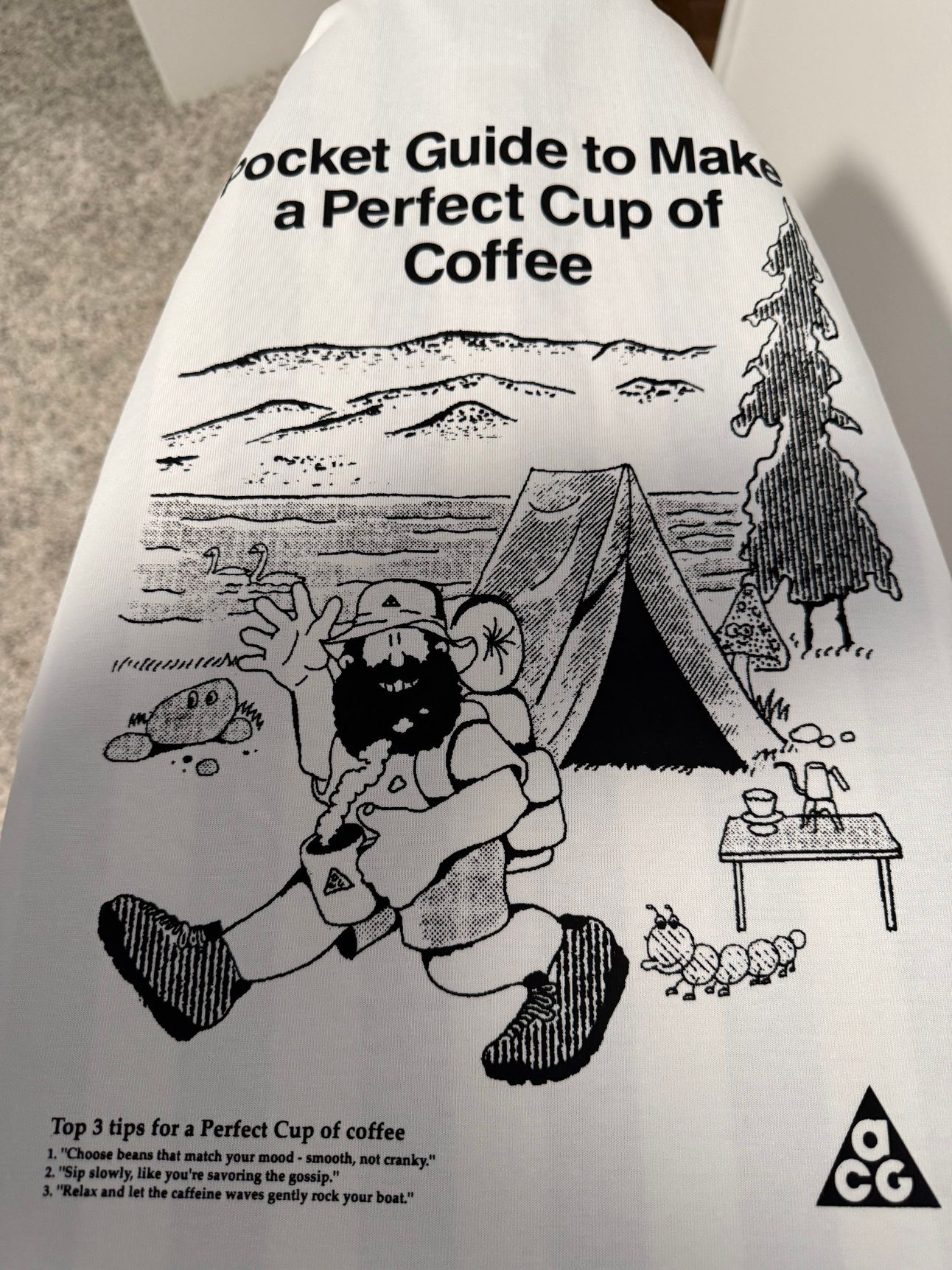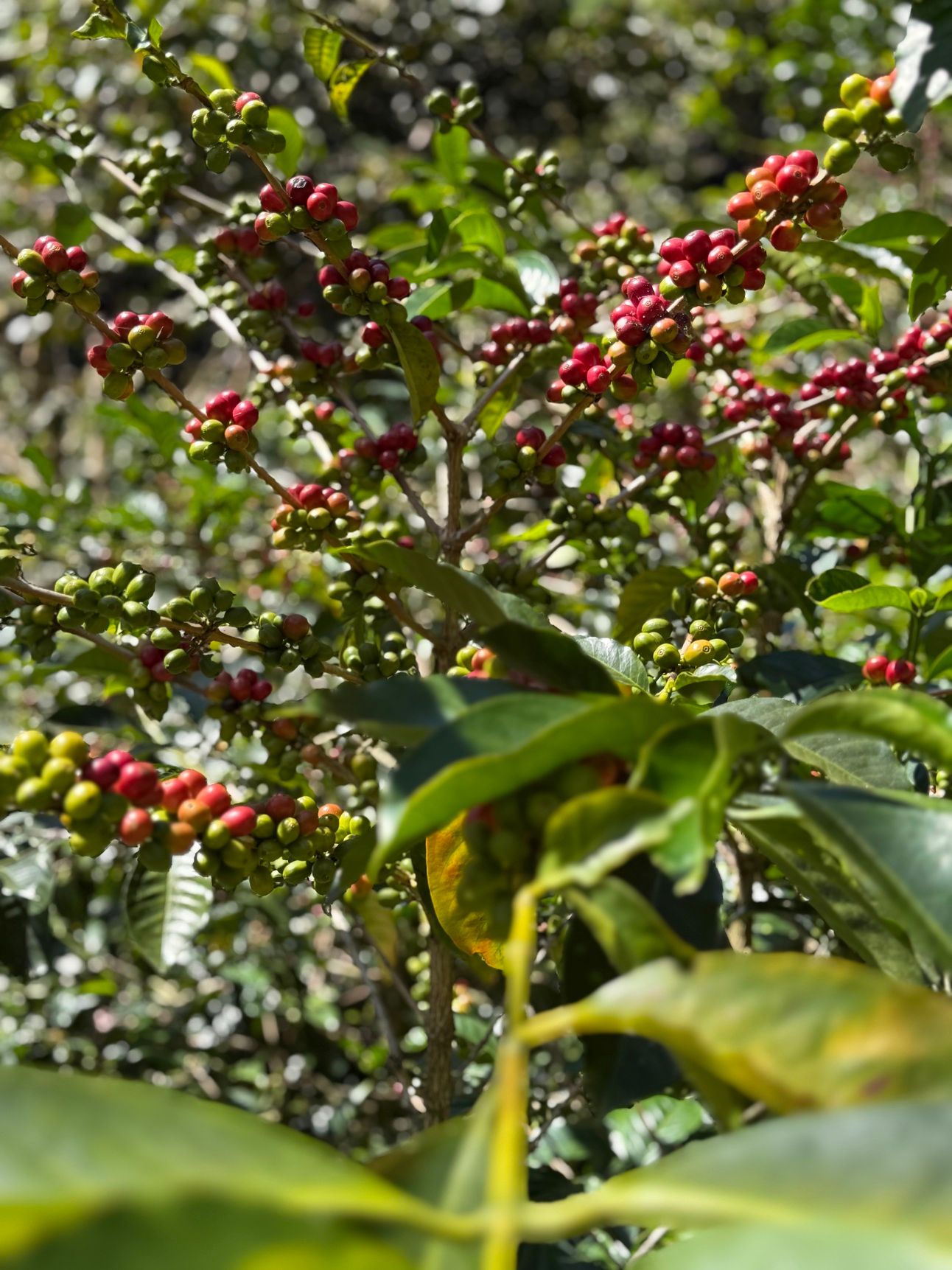- Buy the Drip
- Posts
- Afraid of Acidic Coffee? Read This First...
Afraid of Acidic Coffee? Read This First...
We’ve trained people to expect dark, bitter sludge and NOT juicy, vibrant flavor. Here's how acidity redefines what coffee should taste like (and how to explain it to your customers or yourself).


Acidity: A Crash Course
Acidity is one of the basic building blocks of flavor in wine, in food, and yes…in coffee!
Scientifically speaking, acidity refers to the concentration of hydrogen ions in a solution. But if your eyes just glazed over, mine just did….here’s the real-world version:
Low pH (acidic) = lemon juice, vinegar, green apple
Neutral pH = water
High pH (basic) = baking soda, soap
But acidity in coffee isn’t about pH. It’s not even about how your stomach reacts.
It’s about perceived brightness and vibrancy the same way you taste a splash of citrus on a dish or the zing of tart fruit in a dessert.
A Quick History of Acidity
Acidity has long played a role in food and drink….
The ancient Egyptians used vinegar for preservation.
Romans served fruit-forward wines with high acid to cleanse the palate.
In the early 1900s, the pH scale gave us a way to quantify acidity.
And in the 1960s–80s, food scientists began identifying acids in coffee: citric, malic, tartaric, acetic, and so on.
But while scientists were breaking it down chemically, baristas and roasters were learning to taste it.
The best coffees had structure, lift, and clarity. That “zing” became one of the most prized attributes on cupping forms. Acidity wasn’t a flaw…it’s a feature!
What Acidity Means in Coffee
In coffee, acidity isn’t just flavor…it’s function
It adds brightness and vibrancy. That lively, juicy quality you get in high-quality coffees? That’s acidity doing its job.
It helps balance sweetness and bitterness. Like good seasoning in a dish, acidity sharpens or softens flavors creating nuance instead of noise.
You’ll hear tasters use words like bright, juicy, crisp, tart, zesty, and vibrant.
Malic acid = apple like
Citric acid = lemon/lime
Tartaric acid = grape like
Phosphoric acid = sparkling cola
Some of the most prized coffees in the world… think high-elevation Panamanian Geishas are famous for their expressive acidity. They dance on the palate. They linger.
But acidity isn’t working alone.
It’s part of a team alongside sugars, aromatics, roast level, and brew method that creates complexity.
When people first encounter it, especially after years of dark roasts or diner drip, it can feel… weird.
That’s not acidity’s fault. That’s just unfamiliarity.
Why People Think They Don’t Like It
Many people say they don’t like “acidic coffee.” But what they really mean is: they’re not used to it.
A 2023 study on coffee sensory language found that most consumers associate “acidity” with negative traits — like sourness or stomach discomfort — even though trained tasters use it to describe brightness, vibrancy, and complexity.
It’s a language gap. What professionals celebrate, the average drinker avoids.
The same study also showed that consumer preference is shaped by familiarity, cultural norms, and past experiences — not just what’s in the cup. So if someone grew up drinking dark-roast, bitter brews, a high-acid washed Colombian might just taste “wrong.”
Remember the first time you had wine, kombucha, an energy drink, COFFEE!? Give it time… many of us didn’t like IPAs, sourdough, or sparkling water the first time either…
If you click this ad below, it truely helps us build our platform here at Buy the Drip and further our ability to create content that you’ll love, weekly.
Receive Honest News Today
Join over 4 million Americans who start their day with 1440 – your daily digest for unbiased, fact-centric news. From politics to sports, we cover it all by analyzing over 100 sources. Our concise, 5-minute read lands in your inbox each morning at no cost. Experience news without the noise; let 1440 help you make up your own mind. Sign up now and invite your friends and family to be part of the informed.
Coffee Pros Can Help Consumers Understand Acidity
Most consumers don’t show up asking for a “bright, high-acid coffee.” They just want something that tastes like coffee. And for most of their lives, that’s meant dark, bitter (maybe?), and familiar.
That’s where we come in.
Here’s how we can guide them toward enjoying what acidity actually brings to the cup…
Change the language.
Skip “acidic.” Say bright, juicy, fruity. Relatable words create curiosity, not confusion.
Connect to familiar flavors.
“Like green apple.” “Think lemonade.” “Reminds me of white wine.” People need reference points they know.
Start sweet.
Choose coffees with balanced sweetness. Let sweetness soften the acidity and ease them in
Brew it well.
Clean water. Right ratio. No over-extraction. A crisp cup can make acidity shine.
Tell the story.
Explain where the zing comes from altitude, processing, origin. Context makes acidity meaningful.
Normalize the journey.
Most people don’t love acidity on day one. That’s okay. Taste evolves.
Reading: A 50% Tariff On All Brazilian Imports Would Be A Disaster For Coffee This Sprudge piece lays out why looming tariffs on Brazilian coffee could send prices sky-high and reshape sourcing dynamics
Watching: This classic video from 12 years ago is a throwback worth revisiting. Poul Mark breaks down the difference between acidity and bitterness in coffee with clarity and precision…. a reminder that some of the best lessons don’t go out of style.
Listening: Listen to Acidity here!
Brewing: Want coffee that pops? Try a longer bloom 50’s ….use lighter roast, and maintain water around 92–94 °C. This brings out vibrant fruit notes you’ll taste the citrus tang and juicy brightness - BOOM - Acidity!


our open accountability structure related to personal, physical or business growth
Distance: Buy the Drip run club. Clocking some kilometers. Help us push a few more kilometers through this week?
Want to join us as we hit the road? Let’s connect on Strava! or, join our Whoop group - just respond to the email and let’s grind together!






Reply